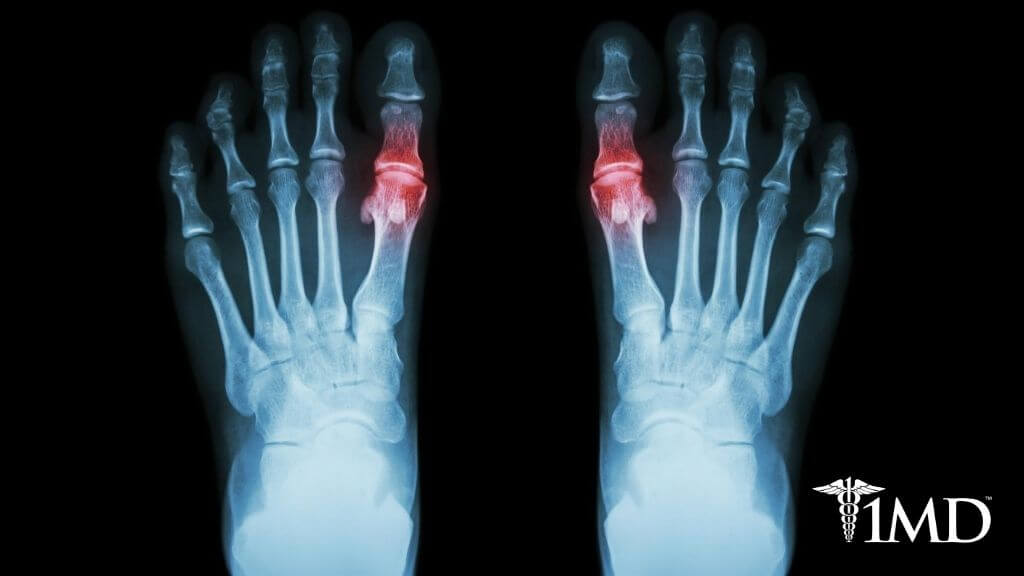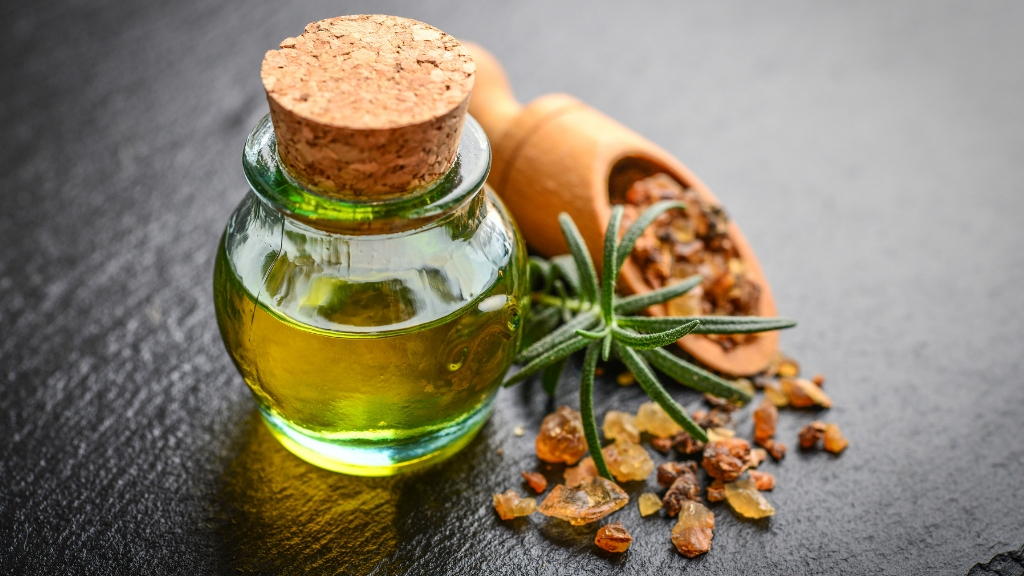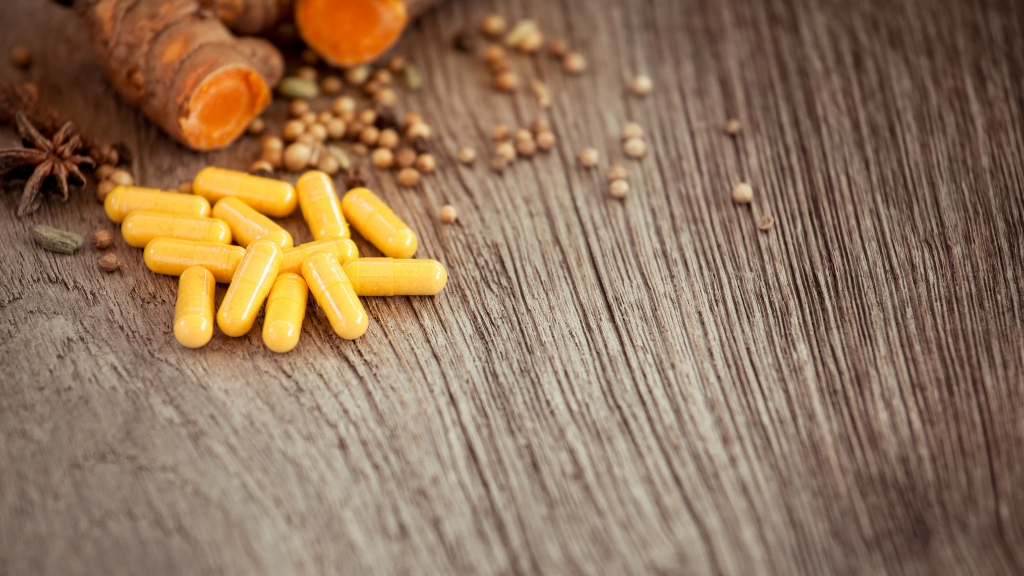Gout May Be Your Second Arthritis & Boswellia May Be Your Answer
7 minute read
Having arthritis is bad enough. Unfortunately, gout is also an inflammatory condition, and it is commonly diagnosed alongside arthritis.
Is that pain in your knee from arthritis or gout? Or both? It is important to understand the difference, so that you can effectively treat the pain and promote better joint health.
The Gout-Arthritis Relationship
Gout can occur with osteoarthritis, rheumatoid arthritis, and psoriatic arthritis. Gout causes uric acid crystal deposits in an already inflamed and painful joint. You end up with severe pain, swelling, and tenderness.
These symptoms may appear to come from your arthritis, but missing a gout diagnosis could result in the wrong treatment plan, meaning more pain and for longer.
If you think you have gout, you need to consult your doctor right away. Depending on the type of arthritis you have, there are certain things you can look for to identify the presence of gout.
Gout has a unique relationship with the various types of arthritis and successful treatment depends on you understanding these relationships:
Rheumatoid arthritis: It was long thought that RA and gout were mutually exclusive, but the percentage of people with both continues to increase. This rise is likely due to the greater prevalence of gout risk factors, such as obesity, kidney disease, and high blood pressure.
Osteoarthritis: The trouble with gout and OA is detecting which is the cause and which is the effect. The damage to your joints by OA may create the ideal environment for uric acid crystals to set up shop.

On the other hand, the crystal deposits could trigger inflammation, making joints more susceptible to OA damage. It’s part of why fighting OA flare-ups is so important.
Psoriatic arthritis: The risk factors for gout and PA overlap, such as obesity. In addition to this, uric acid levels are higher in patients with PA because it accumulates during the skin cell turnover associated with psoriasis. This increases the risk for developing both gout and PA.
Regardless of the specifics of the relationship, the bottom line is that gout is a common development among individuals with arthritis. This second arthritis needs attention too and will require its own treatment plan.
It is a common misconception to assume your arthritis treatment plan will take care of your gout too. The conditions are different, and you will need to treat your gout separately to get the best results.
The Herb That Helps You With Gout
Treating gout is more effective when you understand the differences between gout and arthritis. The link between the two conditions is clear, but what sets them apart?
Gout is actually a type of arthritis except with inflammation coming uric acid crystal deposits. These sharp crystals irritate the delicate joint tissues, causing more inflammation. It is the presence of these crystals that makes gout unique, and why different treatment options are required.

Boswellia serrata has long been used for medicinal purposes and has recently been welcomed by Western medicine. As a powerful anti-inflammatory and analgesic agent, Boswellia serrata can successfully treat inflammation-related conditions like arthritis and gout to relieve pain.
This medicinal herb helps to protect your joints from damage by preventing inflammatory cells from entering damaged joint tissue.
| Related: Boswellia Serrata: A Natural Painkiller Stronger Than Ibuprofen |
When it comes to gout, Boswellia serrata effectively relieves inflammation associated with the crystals. Gout cannot be cured, but supplements with this powerful medicinal herb have been shown to help a great deal.
The herb has no direct impact on the uric acid crystals, but it reduces inflammation. Most of the pain felt with arthritis or gout comes from the inflammation, so reducing this can provide significant relief.
Certain medications can help dissolve uric acid crystals, but this does not cure gout. Even when risk factors have been reduced or removed, these crystals can form again. This is even more likely when you also have either psoriatic arthritis, osteoarthritis, or rheumatoid arthritis.
Your best bet is to focus on relieving inflammation and in turn this can help minimize the irritation caused by the gout crystals.
Learning to Live With Gout
Because the development of gout is strongly linked with obesity, there are advantages in dieting and losing weight too.

| Related: 13 Things Anyone With Arthritis Needs to Know for Better Living |
Shedding pounds will not make the gout go away, but it will reduce the strain placed on your joints. In addition to this, losing weight gets rid of stored fat from your body which reduces widespread inflammation. Incorporating a supplement like Boswellia serrata in your balanced and nutritious diet along with regular exercise could be the perfect combination for gout.
In addition to reducing inflammation and pain, it is important to support the overall health of your joints. Arthritis and gout cannot be cured, but you can boost joint health in spite of them.
In addition to Boswellia serrata, curcumin is another option for naturally reducing inflammation. Curcumin, which is the main compound in the spice turmeric, also works to reduce the levels of uric acid in your body, which can slow the production of gout crystals.
While these supplements work to reduce further damage, collagen is a great supplement to take for boosting joint health. The inflammation and uric acid crystals damage joint tissues and these need to be repaired.
Since collagen is the main component of your joint tissues, bringing in additional support will allow any damage to heal faster, and promote joint strength from within. Stronger, healthier joints will fare better against gout flare-ups than those that continue to degenerate.

All of these ingredients can be found specially formulated for joint health in the EasyFlex supplement.
The Bottom Line
Gout is a form of arthritis, which is a collection of inflammatory conditions that cause joint pain and immobility. They are all common and often develop at the same time, which can make treatment complicated.
Despite being inflammatory diseases, gout and arthritis are different and need to be treated as such. Identifying gout in addition to your arthritis means you can successfully treat both, and sometimes there is a natural anti-inflammatory treatment option that can help.












